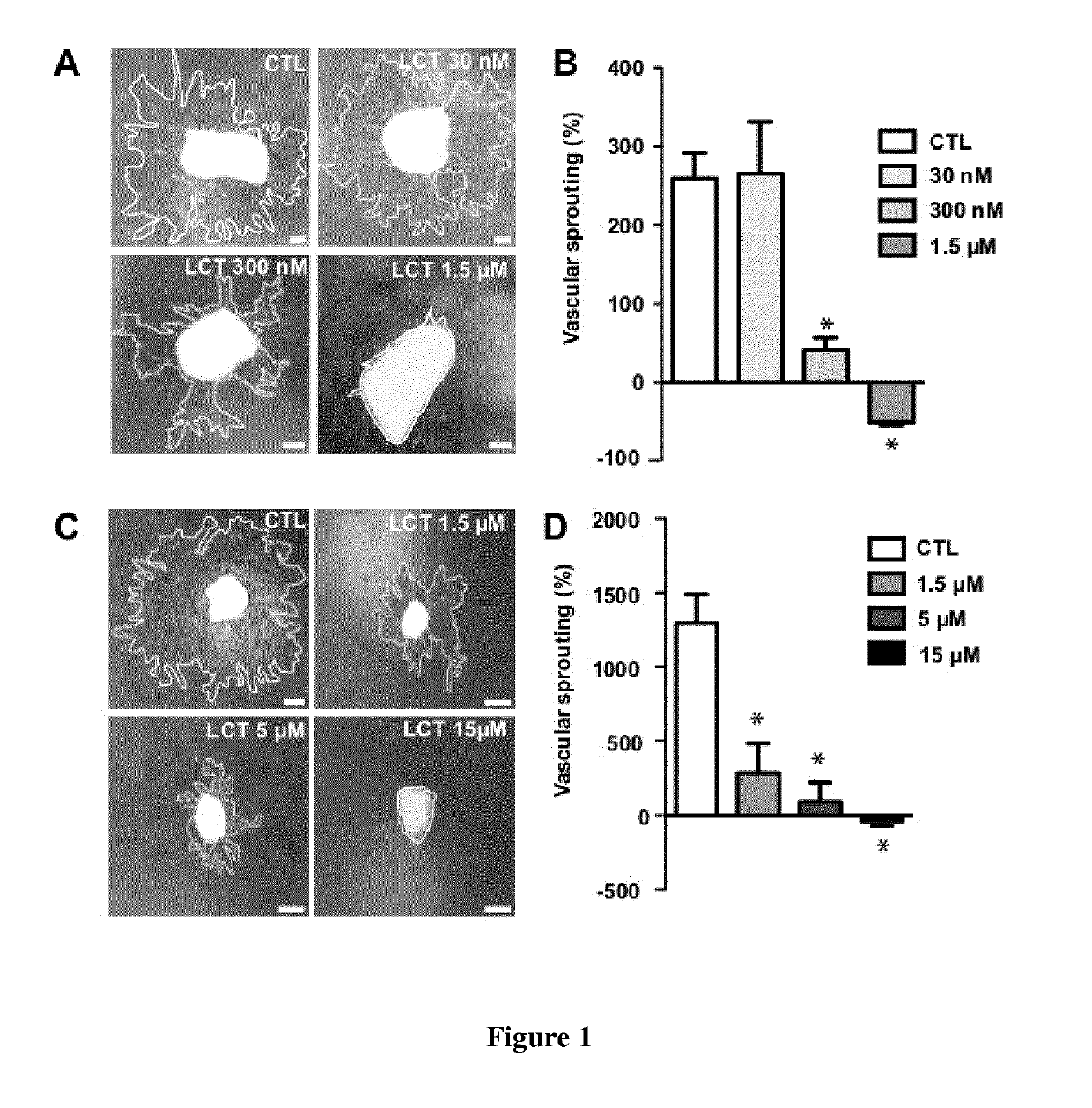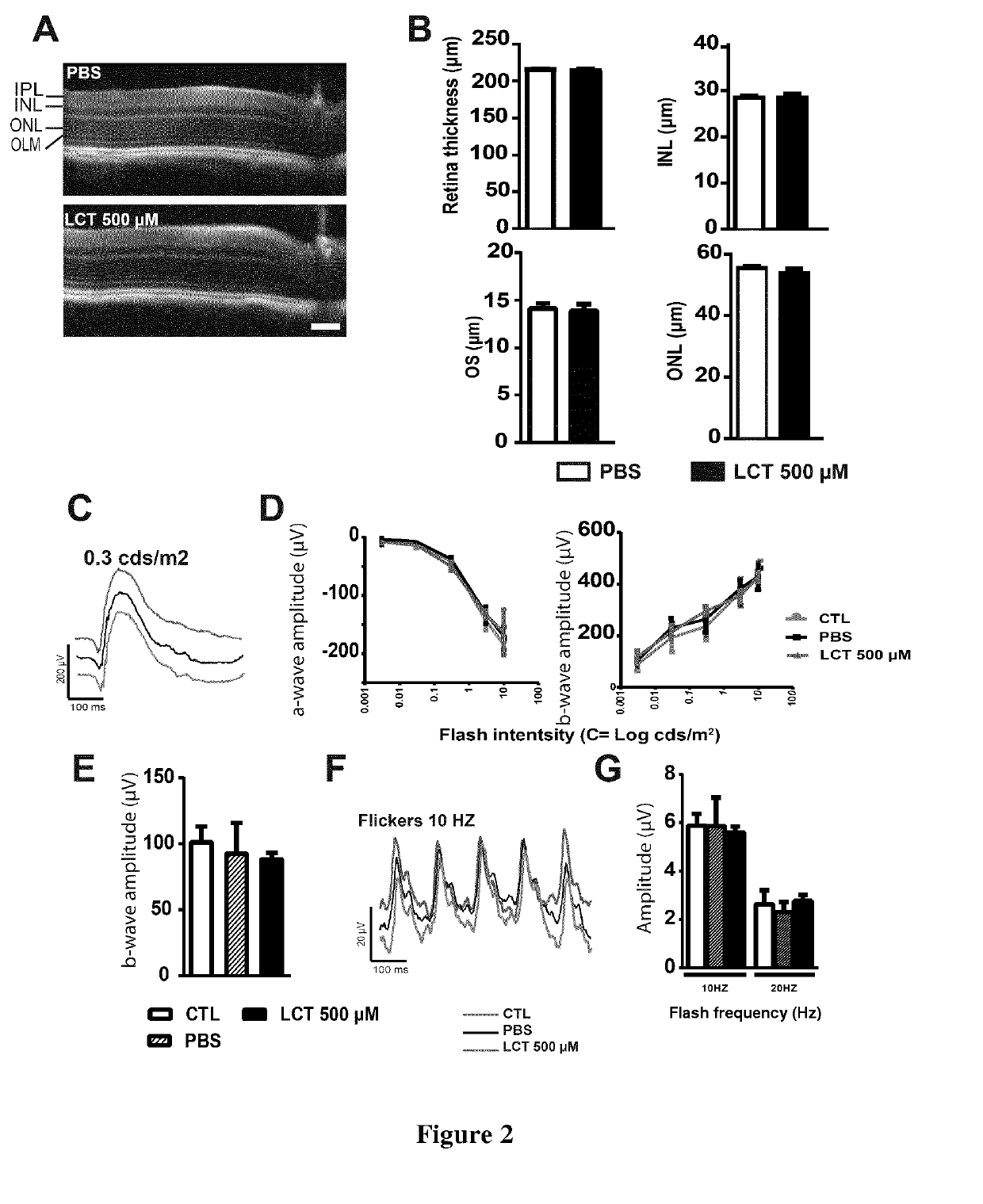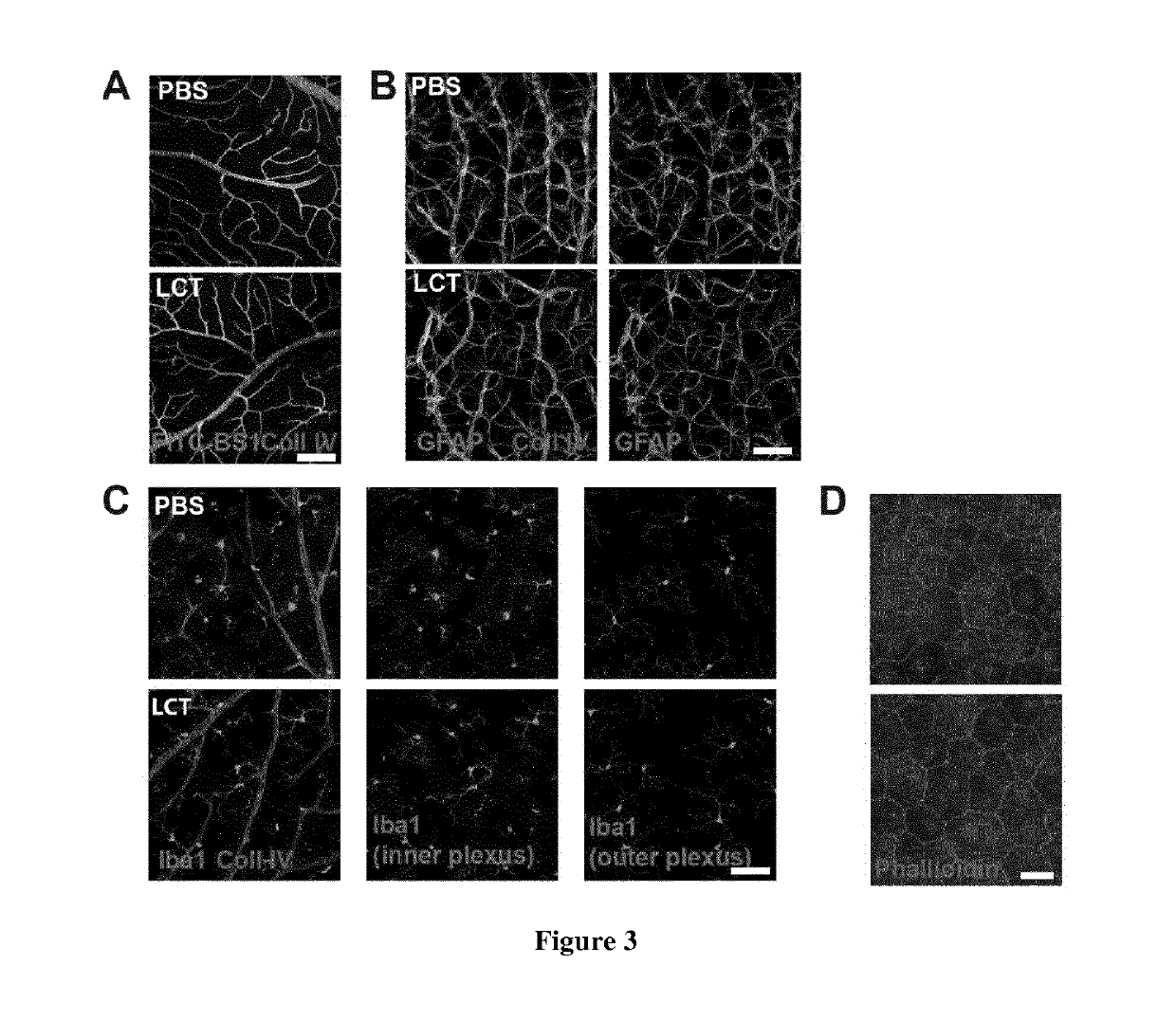Lebecetin, a c-type lectin, as neovascularization inhibitor
a lectin and choroidal neovascularization technology, applied in the field of medicine, can solve the problems of rapid and non-reversible vision loss, and achieve the effect of inhibiting neovascularization and reducing the extent of choroidal or retinal neovascularization
- Summary
- Abstract
- Description
- Claims
- Application Information
AI Technical Summary
Benefits of technology
Problems solved by technology
Method used
Image
Examples
example 1
LCT Inhibits Vascular Sprouting from Aortic and Choroidal Explants
[0168]LCT inhibits endothelial cell proliferation and tubulogenesis in vitro (Pilorget, A. et al. 2007). To test if LCT inhibits neovascularization ex vivo, we cultured mouse aortic rings in matrigel (Lavalette, S. et al. 2011). Aortic rings were cultured for 3 days to allow for vessel sprouting and then treated with increasing doses of LCT. Three days after the addition of LCT, vessel sprouting area was quantified and expressed as the increase (in percentage) of sprouting area between D3 and D6 (FIG. 1A and B). In control conditions, vascular sprouting increased by 259% between D3 and D6. LCT added at a final concentration of 30 nM did not affect vascular sprouting while 300 nM of LCT reduced vascular sprouting between D3 and D6 to 85%. LCT at a dose of 1.5 μM totally inhibited sprouting and resulted in the regression of pre-existing D3 vascular sprouts (FIG. 1B). Increasing doses of LCT did not notably affect fibrob...
example 2
LCT Intravitreal Injection Does Not Alter Retinal Integrity
[0169]Ex vivo experiments demonstrated variability in the dose required to inhibit neovascularization. We thus ran a pilot study to determine the concentration required to reduce neovascularization in the model of laser induced choroidal neovascularization (CNV). One μl of LCT was used for intravitreal injection, as the vitreous volume is 5.3 μl (Remtulla, S. Et al. 1985), the initial concentration of LCT could be estimated to ⅕ of its initial concentration. Depending on its pharmacokinetics LCT may then reaches all ocular compartments (10 μl) and its concentration may decrease to 1 / 10 of the initial concentration. Animals were thus intravitrealy injected with 1 μl of 150 or 500 μM of LCT to reach the estimated final concentration of 15 μM (the dose that regress choroidal explant sprouts) or 50 μM (the highest concentration we can purify from venom). We determined that an intravitreal injection of 1 μl LCT at 150 μM was not ...
example 3
LCT Inhibits Laser-Induced Choroidal Neovascularization
[0171]We showed that LCT inhibits HBMEC proliferation and tubulogenesis in vitro (Pilorget, S. et al. 2007) and vascular sprouting in ex vivo models of neovascularization (FIG. 1) without affecting vascular integrity (FIG. 3). To test if LCT inhibits in vivo neovascularization, LCT activity was assayed in the CNV mouse model. Integrin subunits αv and α5 has been shown recently to be increased from D3 to D7 in the rat CNV model (Nakajima, T. et al. 2014). We quantified the expression of integrin subunits αv and α5 and ß3 and ß5 in mouse choroids after laser-induced choroidal lesions at different time-points. Choroidal lesions were induced on DO with an ophthalmic laser and choroids were collected at D1, D3 and D7. The expression of these subunits was analyzed by RT-qPCR and compared to non-lesioned choroids (DO). The expression of all subunits was found to be increased within 24 h after lesion and peaked at D3. At D7, αv returned...
PUM
| Property | Measurement | Unit |
|---|---|---|
| thickness | aaaaa | aaaaa |
| frequencies | aaaaa | aaaaa |
| frequencies | aaaaa | aaaaa |
Abstract
Description
Claims
Application Information
 Login to View More
Login to View More - R&D
- Intellectual Property
- Life Sciences
- Materials
- Tech Scout
- Unparalleled Data Quality
- Higher Quality Content
- 60% Fewer Hallucinations
Browse by: Latest US Patents, China's latest patents, Technical Efficacy Thesaurus, Application Domain, Technology Topic, Popular Technical Reports.
© 2025 PatSnap. All rights reserved.Legal|Privacy policy|Modern Slavery Act Transparency Statement|Sitemap|About US| Contact US: help@patsnap.com



